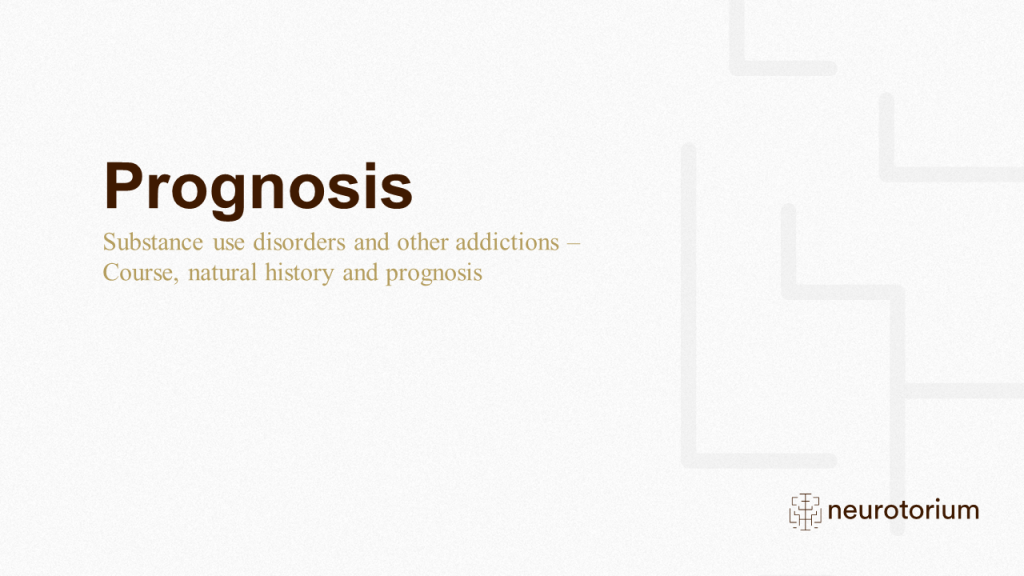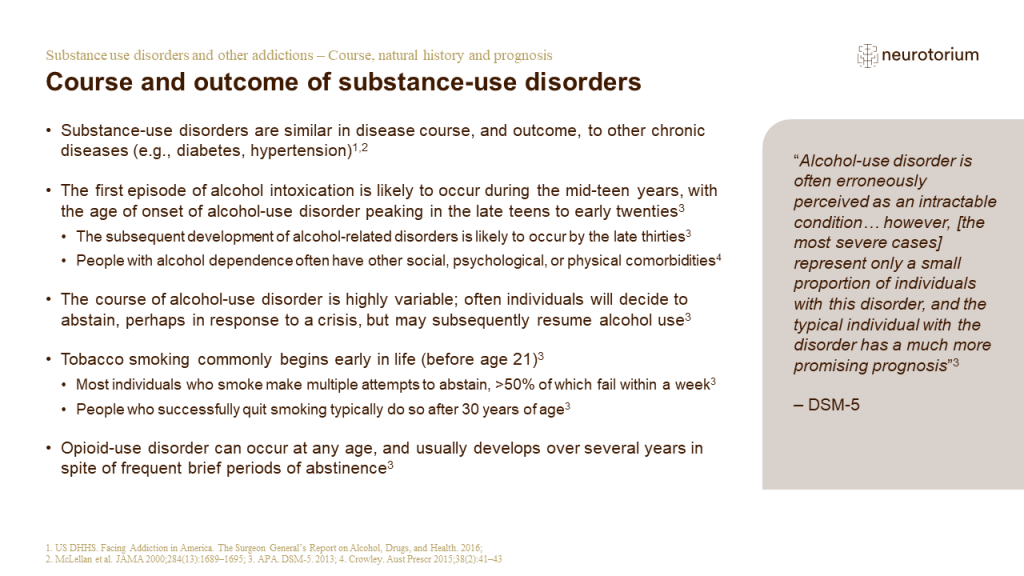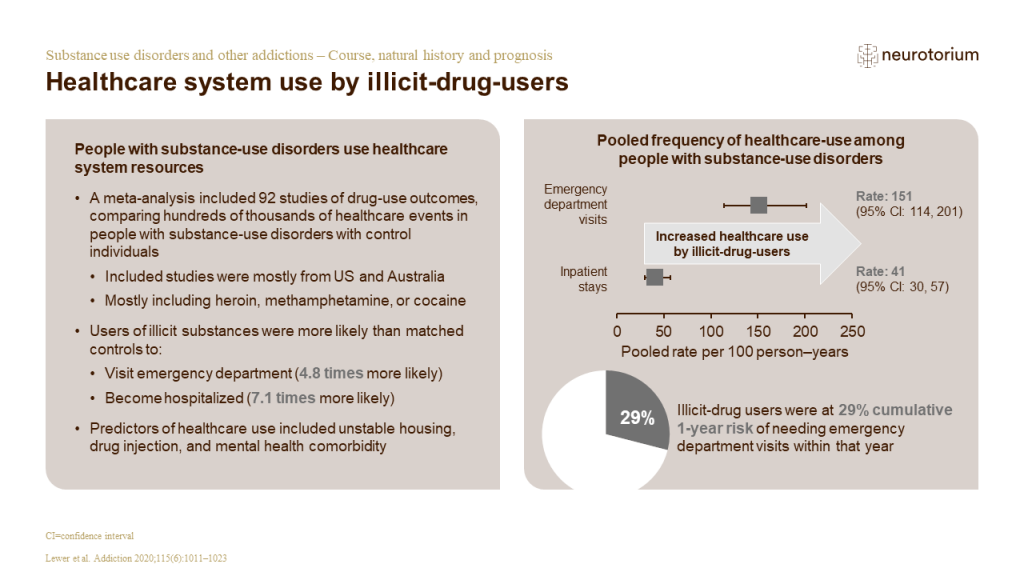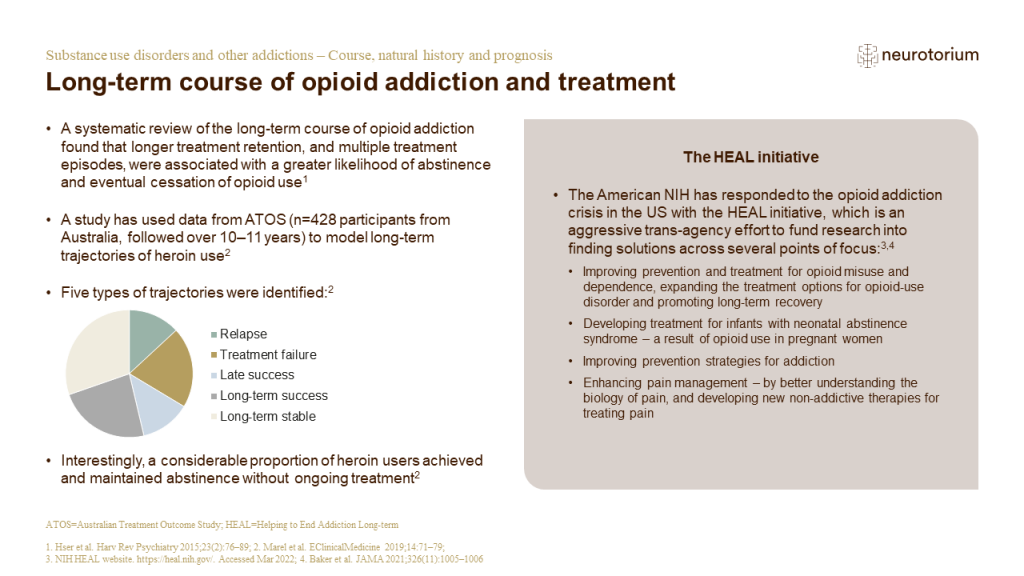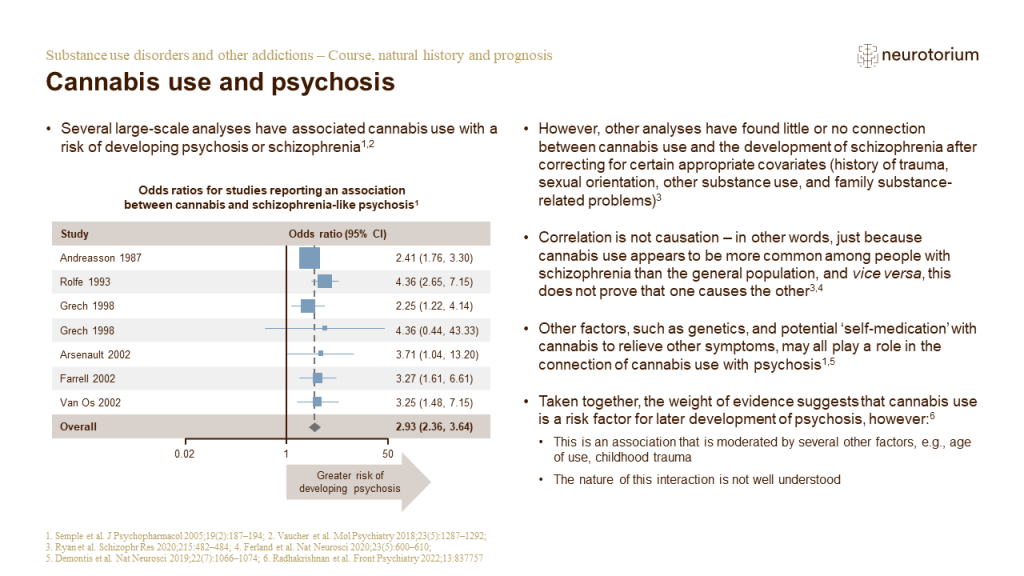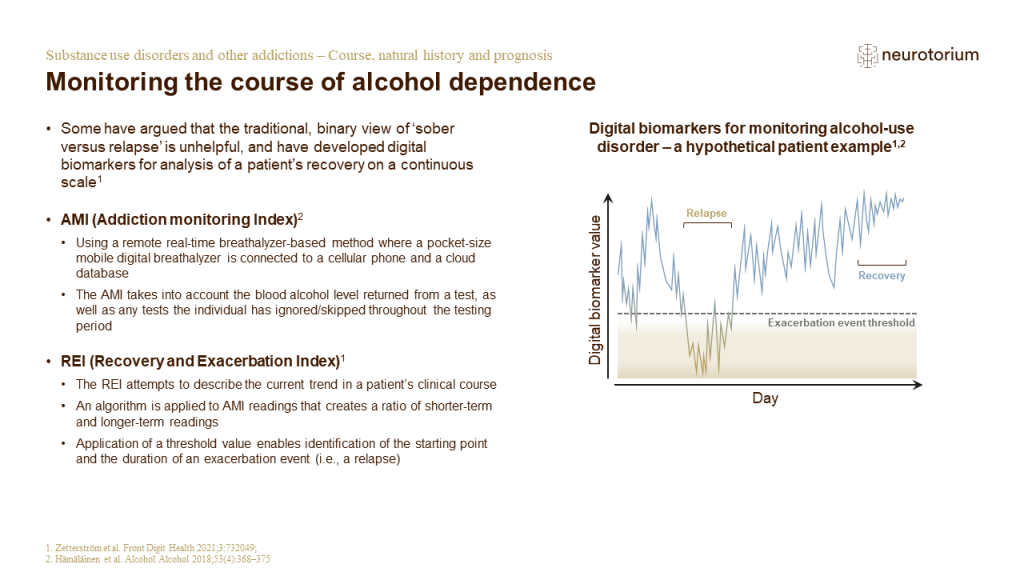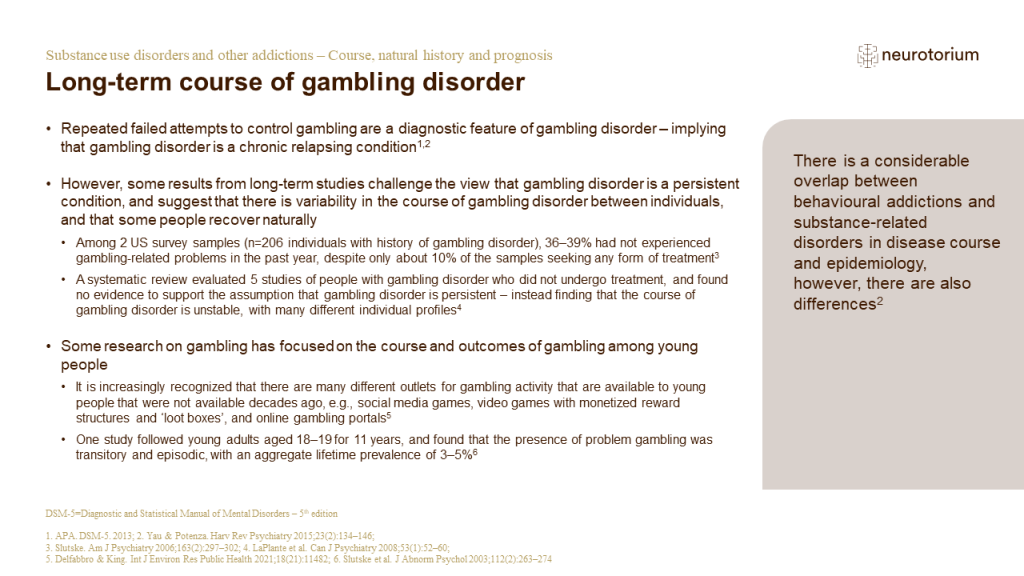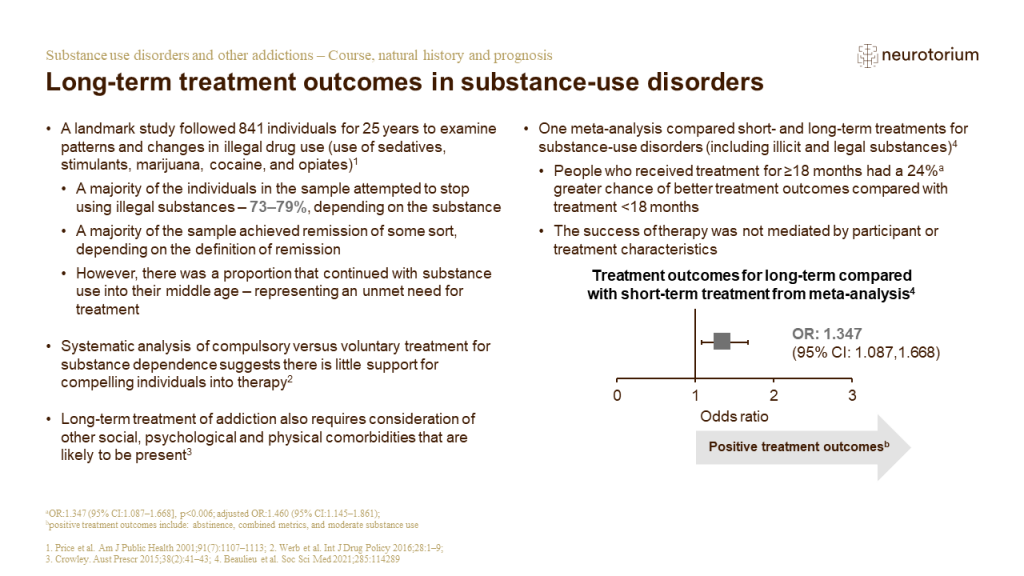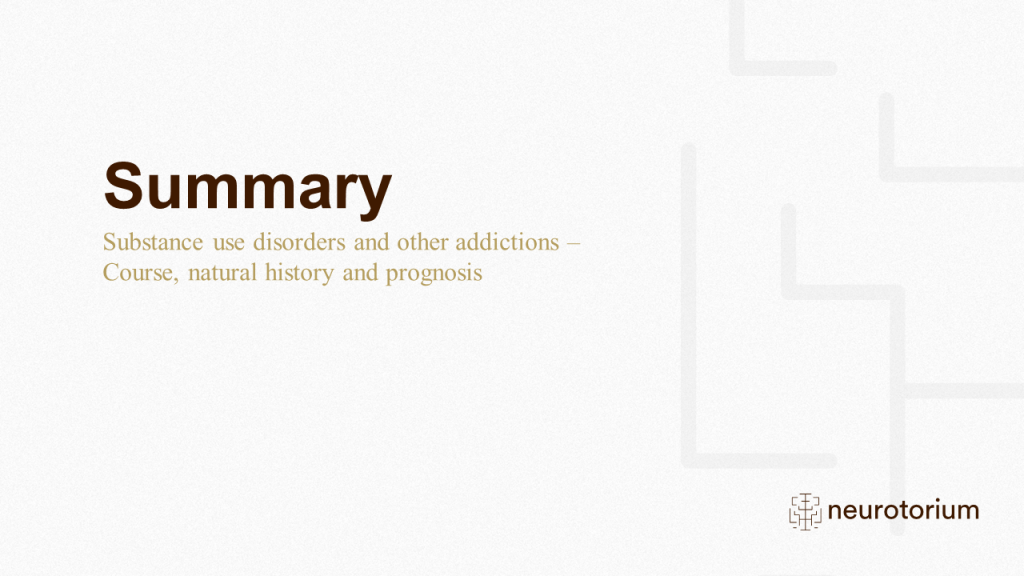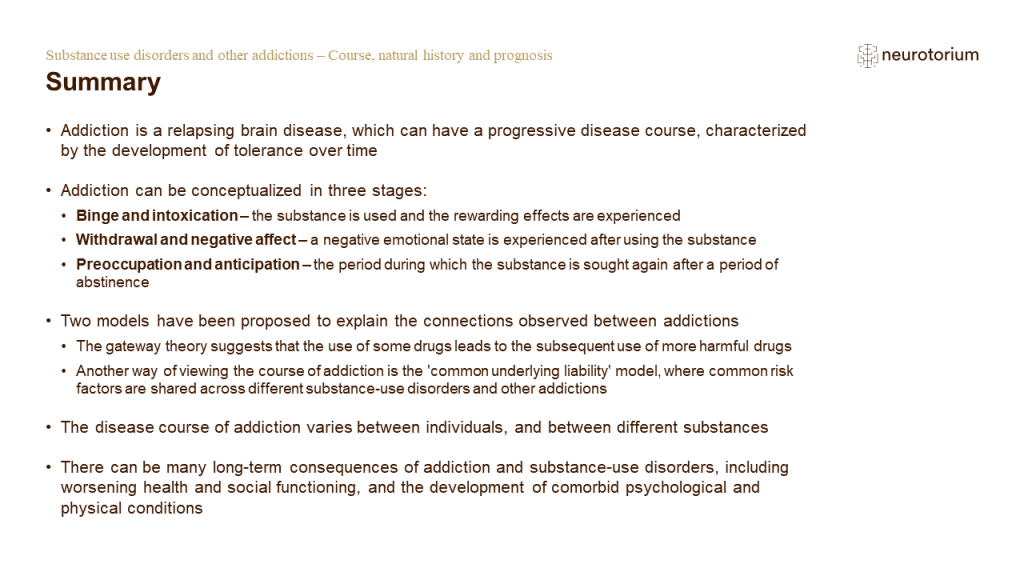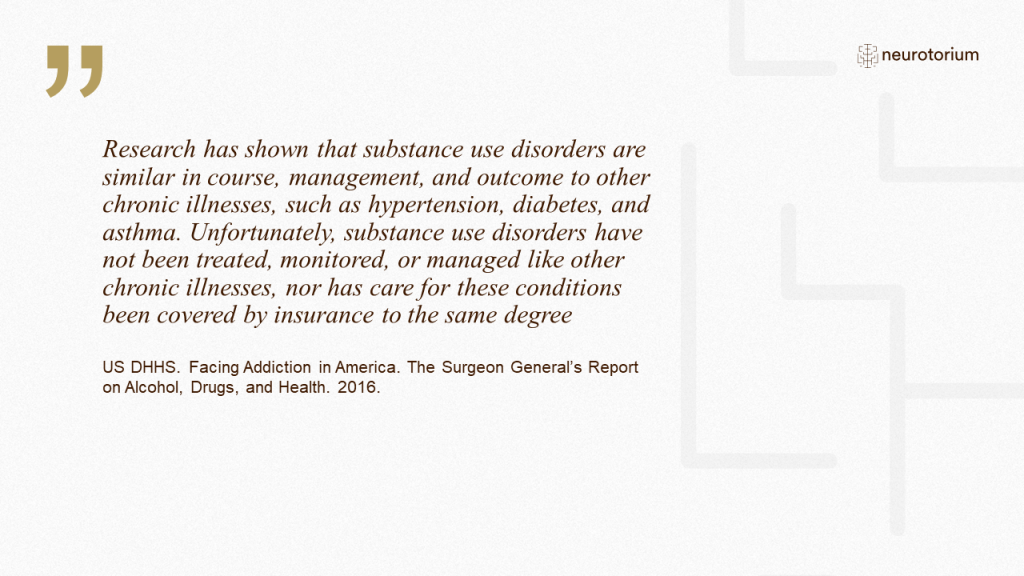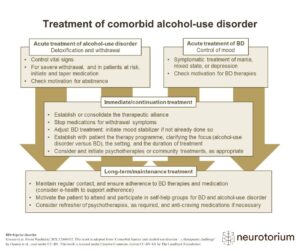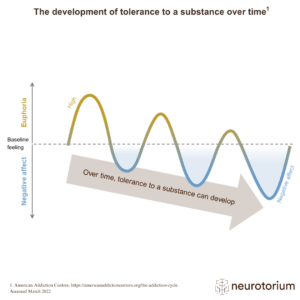Index for
slide deck
Introduction
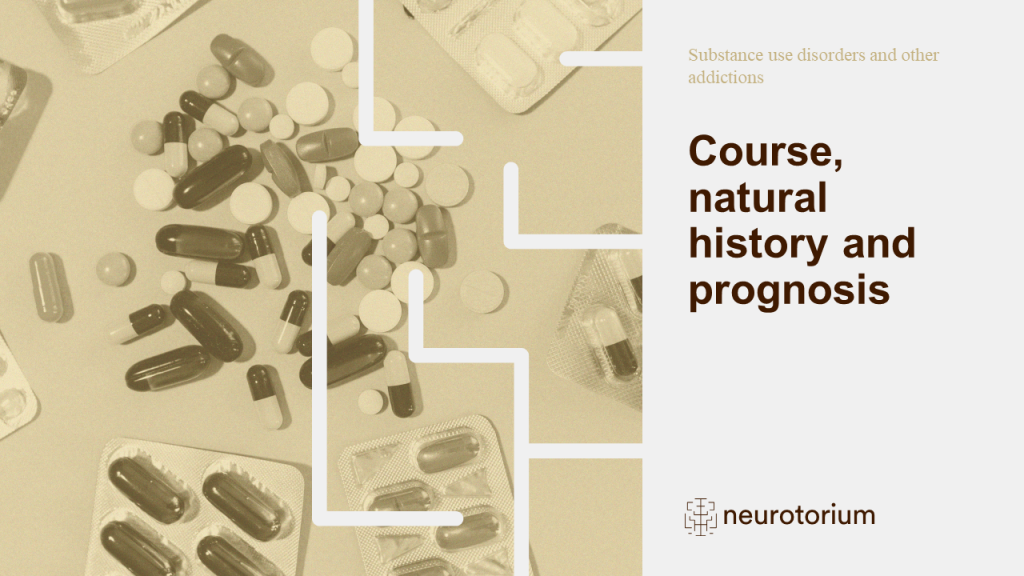
Course, natural history and prognosis
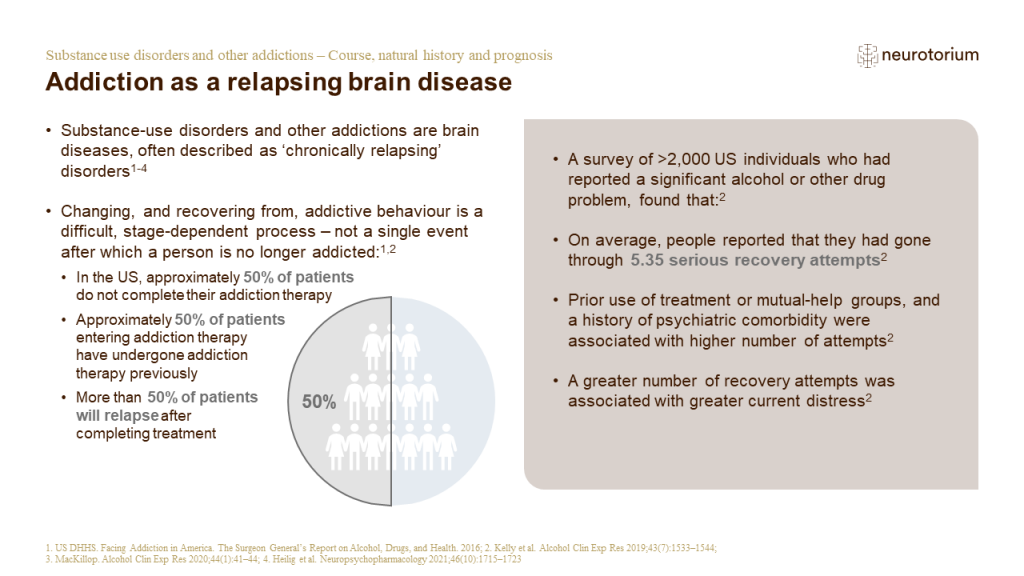
Addiction as a relapsing brain disease
Addiction is a chronic brain disease, with potential outcomes ranging from relapse (a return to substance use) to remission (regaining health and social function).[1] Moreover, addiction is a widespread condition across the globe; healthcare providers, policymakers, and l…
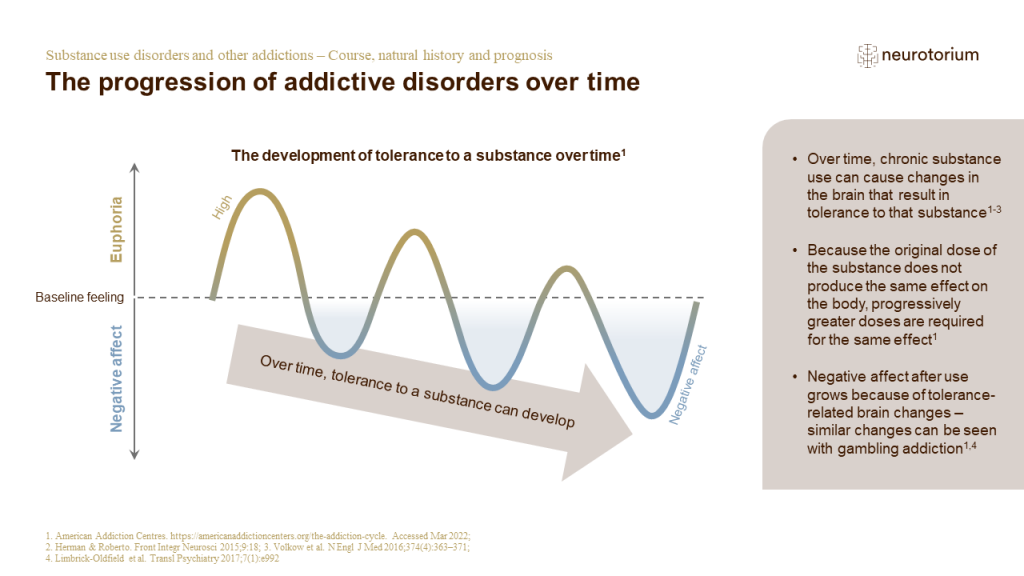
The progression of addictive disorders over time
Stages of addiction
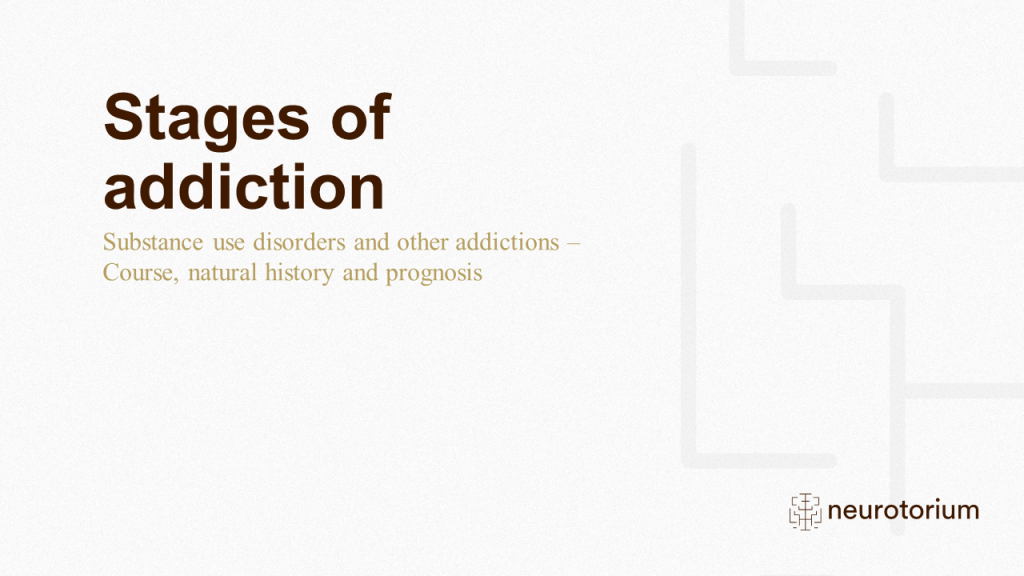
Stages of addiction
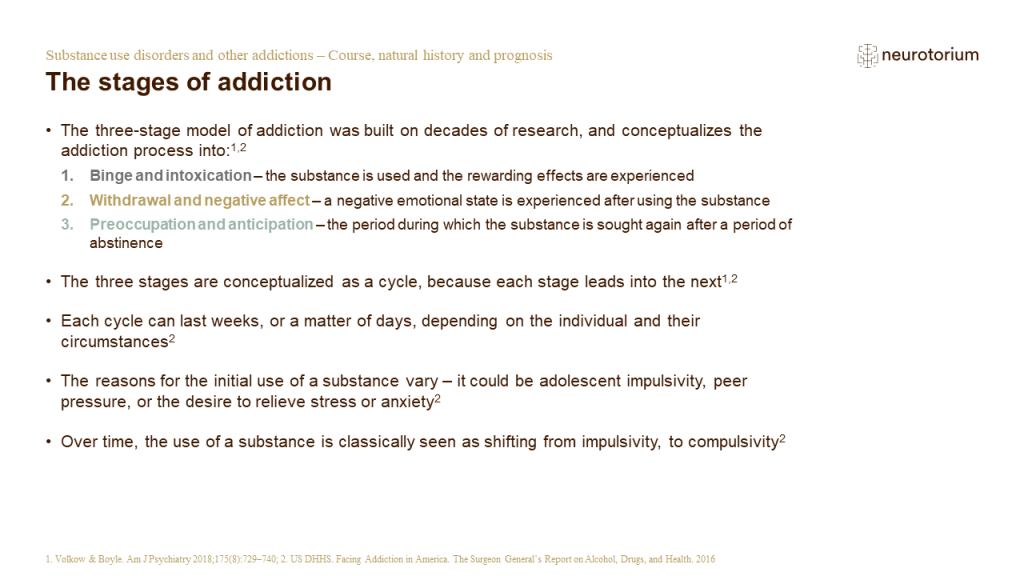
The stages of addiction
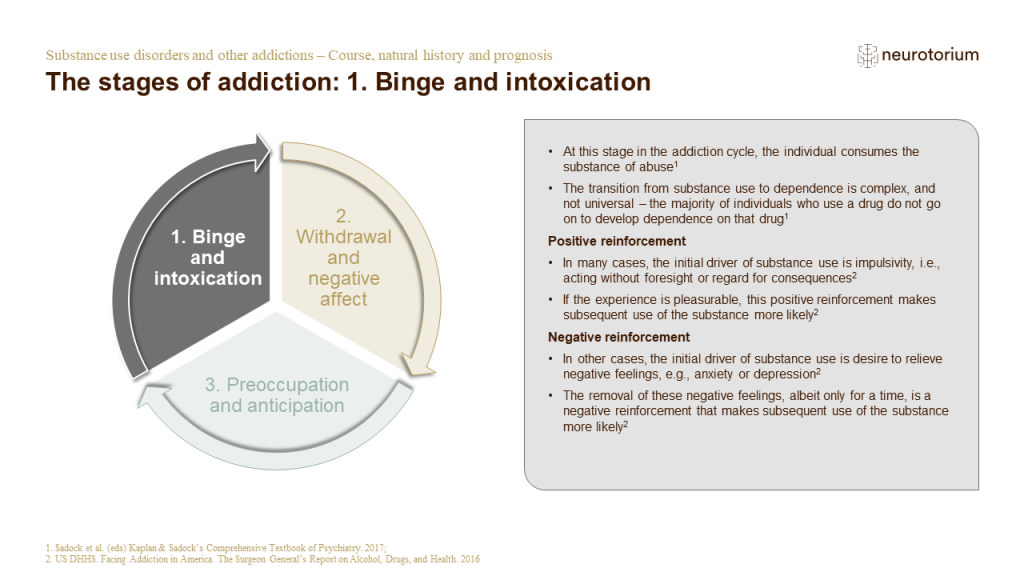
The stages of addiction: 1. Binge and intoxication
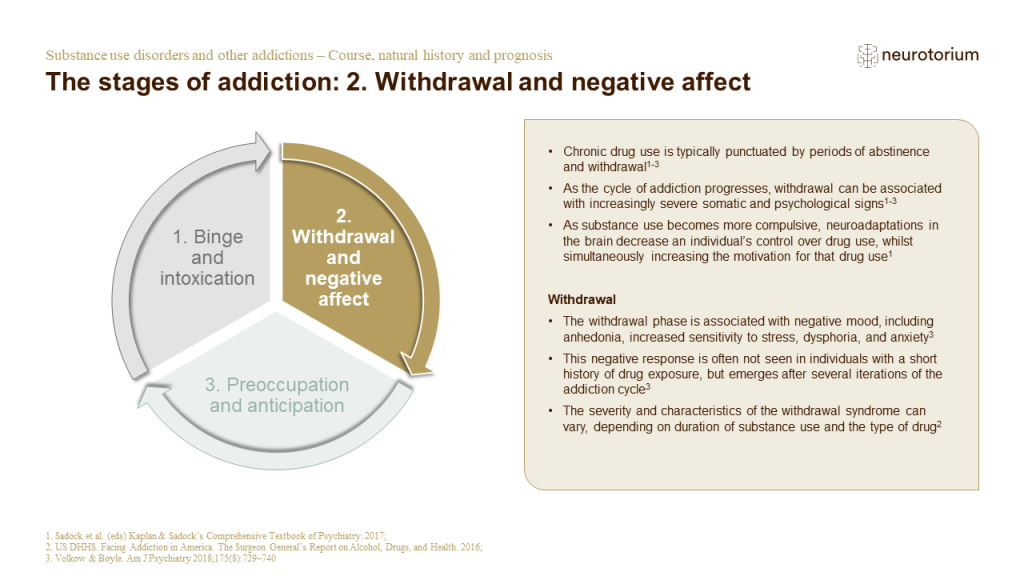
The stages of addiction: 2. Withdrawal and negative affect
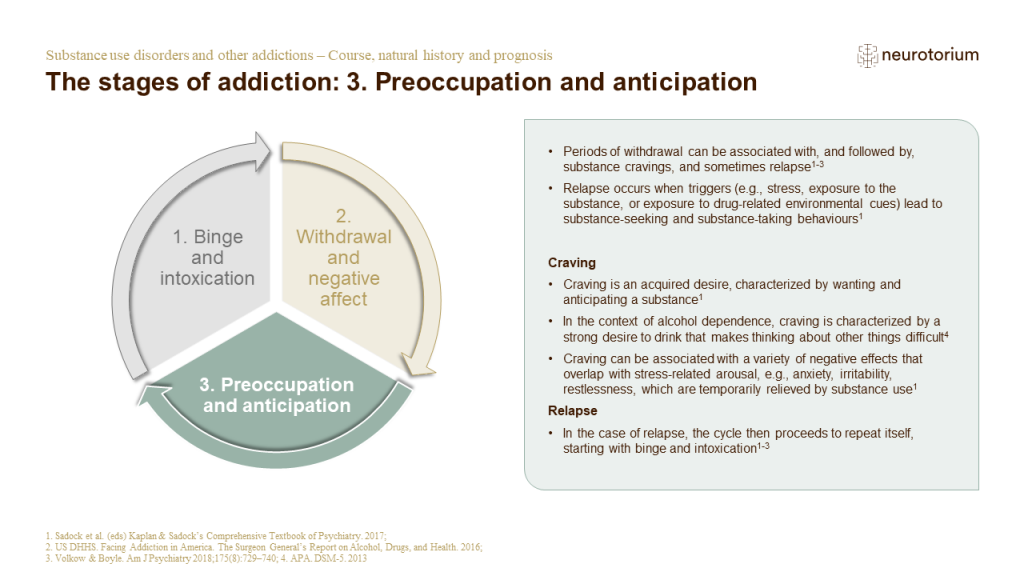
The stages of addiction: 3. Preoccupation and anticipation
During the preoccupation and anticipation stage, environmental cues associated with the addictive substance elicit a strong dopamine response from the dysregulated reward and motivation circuitry within the brain.[3] Furthermore, in the case of many individuals with addic…
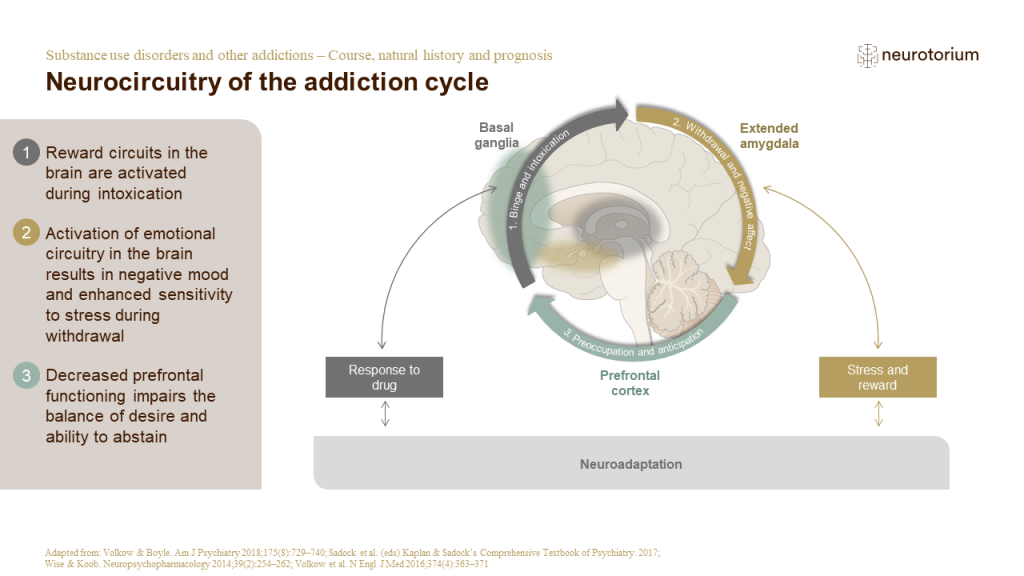
Neurocircuitry of the addiction cycle
The diagram on the slide illustrates the interaction between neurocircuitry and behaviour of addiction, divided into binge/intoxication, withdrawal/negative affect, and preoccupation/anticipation, each of which is associated with the activation of certain neurological pat…
Progression of addiction and substance use disorders
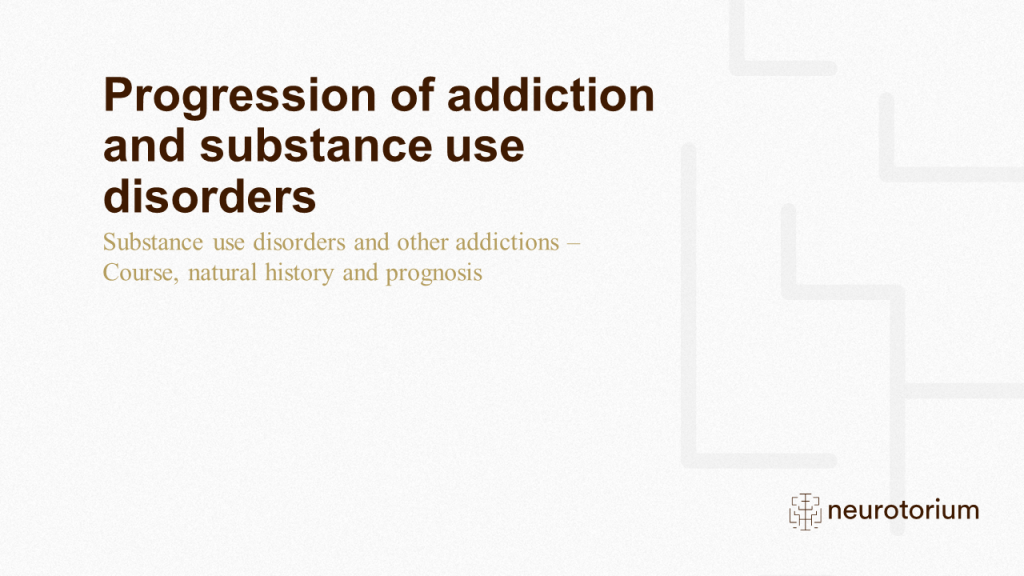
Progression of addiction and substance use disorders
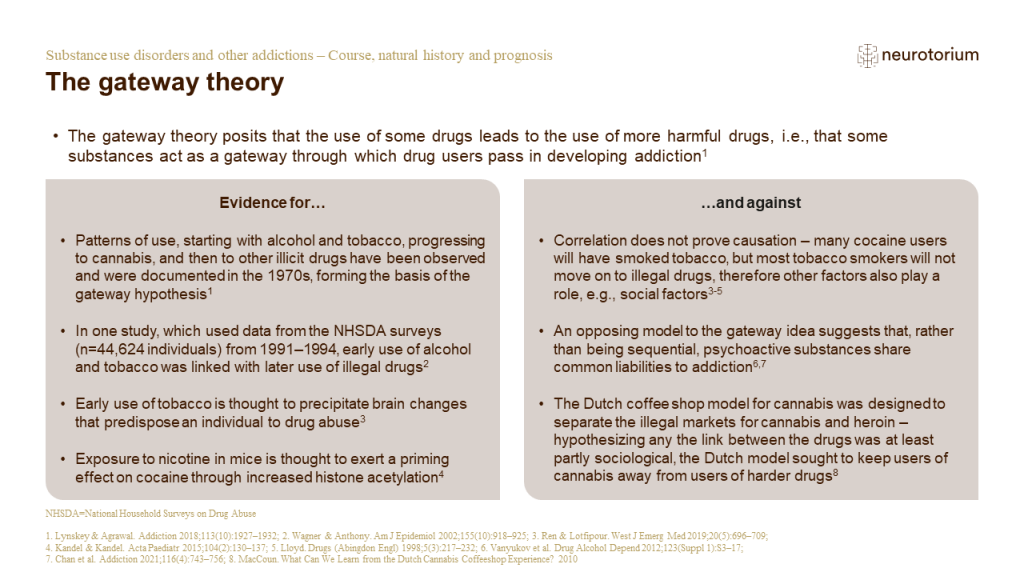
The gateway theory
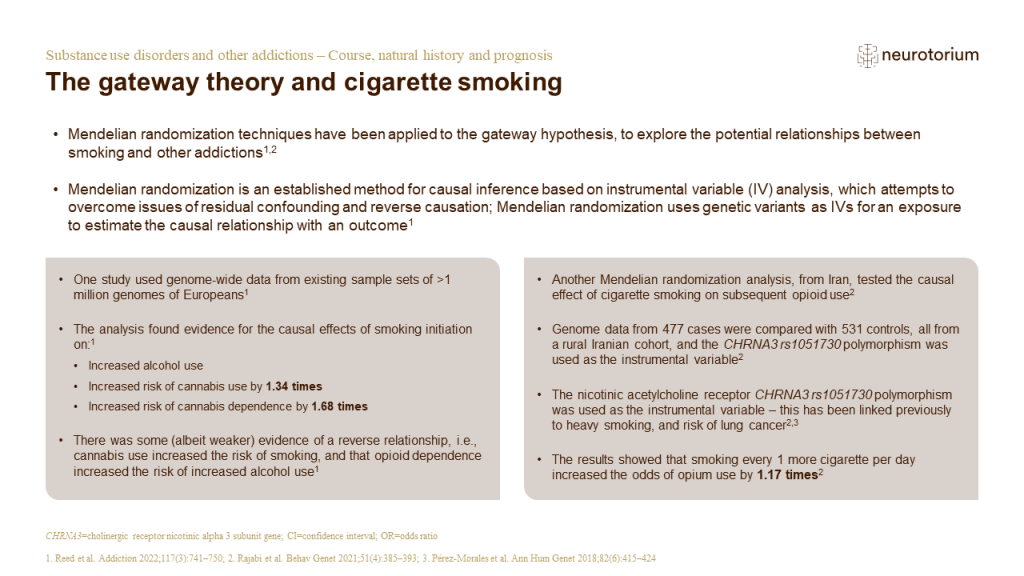
The gateway theory and cigarette smoking
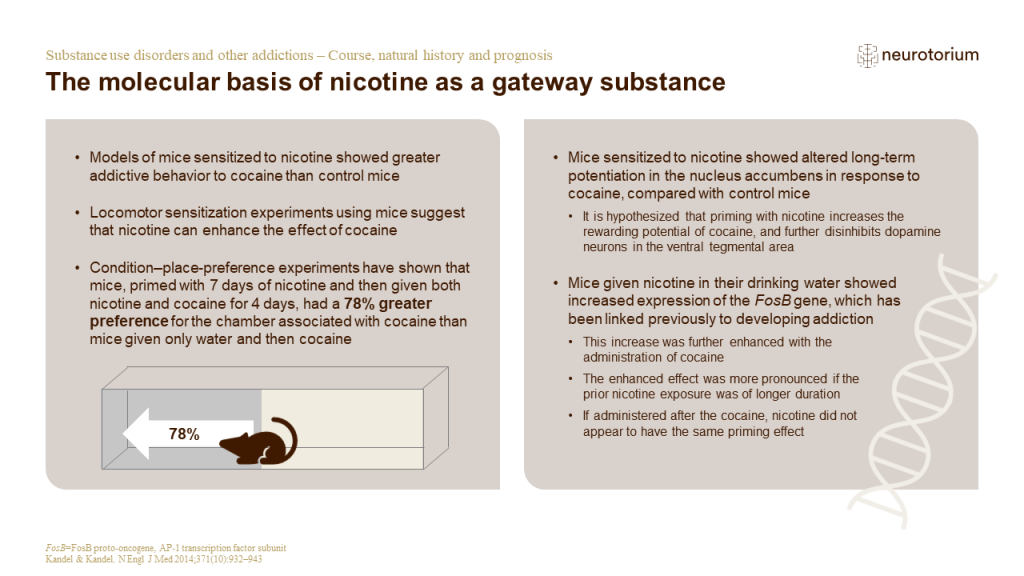
The molecular basis of nicotine as a gateway substance
The slide summarises some of the pioneering work done into the possible molecular and genetic factors underlying the potential role of nicotine (and therefore cigarette smoking) as a agent that may lower the threshold for addiction to other agents.[1] Further research int…
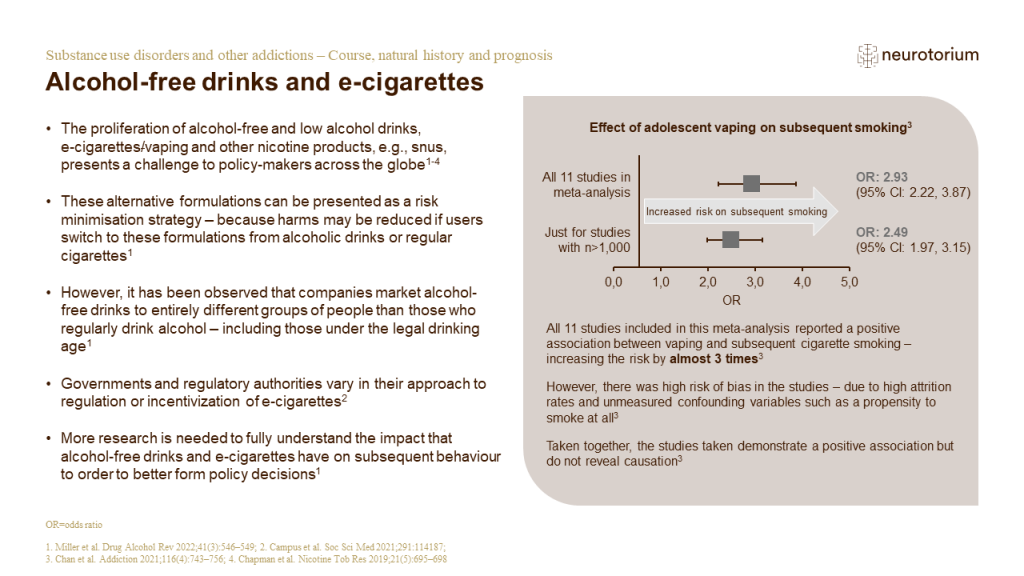
Alcohol-free drinks and e-cigarettes
Across the world, the approach to regulation of e-cigarettes varies from a total focus on health protection (meaning policies to prevent the harms of e-cigarettes), to a focus on the benefits of e-cigarettes on harm prevention (meaning policies to promote e-cigarettes as …
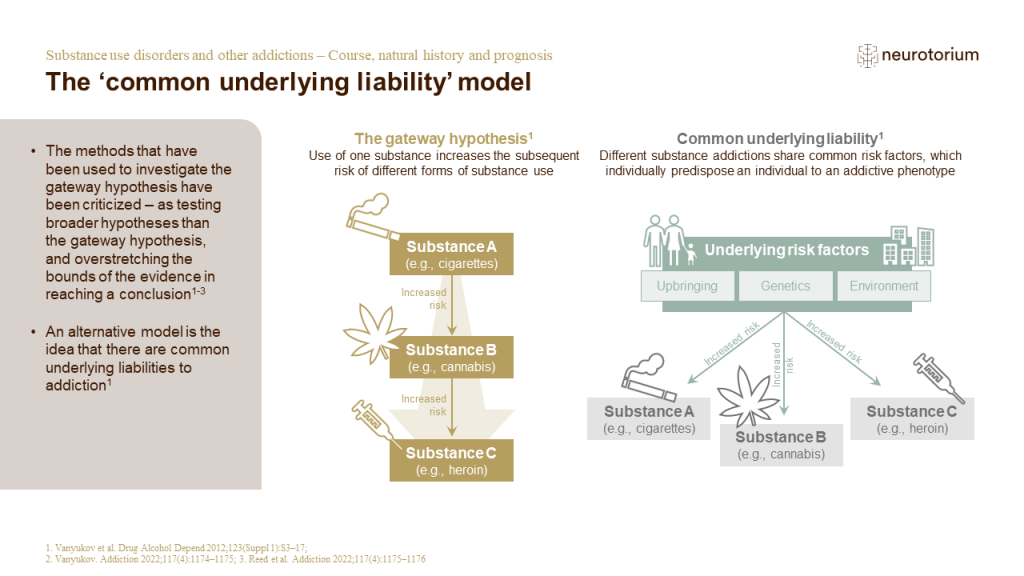
The ‘common underlying liability’ model
The gateway hypothesis and the idea of common underlying liability represent two competing models to explain the relationship that is observed between different addictions and addictive behaviours.[1] Within the former model, initial substance use acts as a gateway to the…
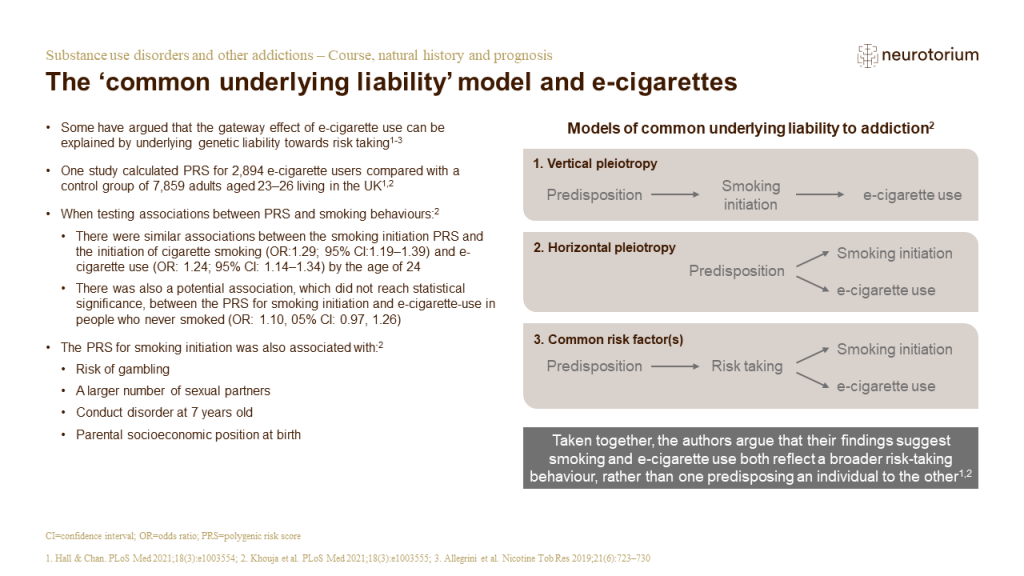
The ‘common underlying liability’ model and e-cigarettes
The study on the slide calculated polygenic risk scores (PRS) from a large UK dataset, and used logistic regression analysis to assess whether the association between self-reported smoking initiation and e-cigarette use could be explained by the PRS for smoking initiation…


